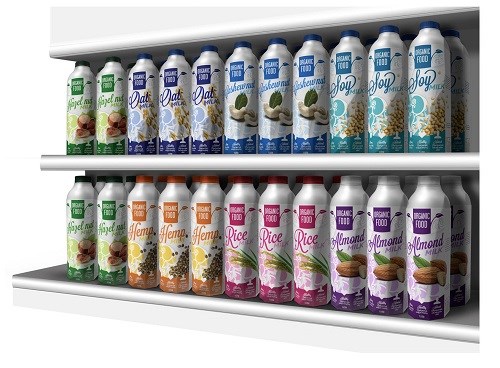First Aseptic Carton Bottle for Enriched Dairy Products
Nova Chemicals and Tetra Pak collaboration has led to recent commercialization of novel package.
Nova Chemicals and Tetra Pak collaboration has led to recent commercialization of novel package.
This week at the 2016 TAPPI PLACE conference in Ft. Worth, Texas, Nova Chemicals and Tetra Pak co-presented a paper on their successful collaboration to develop what appears to be the first aseptic carton bottle for ambient white milk.
Moreover, the oxygen barrier properties of Nova’s Surpass HPs667-AB HDPE made it possible for Tetra Pak to expand beyond ambient white milk to enriched dairy alternatives, including flavored and toddler and baby milk in its new Tetra Evero Aseptic package.
“The first generation of the Tetra Evero Aseptic package focuses on ambient white milk, but the ambition was to extend to a range of liquids that could be stored at room temperature throughout the supply chain and in retail outlets. To develop this, Tetra Pak searched for a new polyethylene with the exceptional oxygen barrier properties that this package required. Using Nova Chemical’s HPs667-AB resin, we are able to expand into some of the best performing categories in the global dairy market, such as flavored and vitamin fortified milk,” said Tunc Turkmen, product director for Tetra Evero Aseptic.
Produced with Nova’s Advanced Sclairtech dual-reactor process and single-site catalyst, HPs667-AB is a bimodal homopolymer, 6-melt index, 0.967 g/cc HDPE for cast film and extrusion coating. The material reportedly offers excellent barrier and stiffness performance, which helps converters and brand owners improve the sustainability of packaged goods in a wide variety of applications, including cereal, crackers, dairy and other liquids.
Experts from Nova Chemical’s Center for Performance Applications and Center for Applied Research in Calgary, Alberta, worked closely with the Tetra Pak team to qualify the HPs667-AB resin to meet the Tetra Evero Aseptic performance requirements. In addition, the Nova team helped Tetra Pak ensure that the barrier properties were retained throughout a complex, unique production process and the use of pigmented resins.
Search for nearly 100,000 grades of polymers on the Universal Selector by clicking here

Related Content
-
The Fundamentals of Polyethylene – Part 2: Density and Molecular Weight
PE properties can be adjusted either by changing the molecular weight or by altering the density. While this increases the possible combinations of properties, it also requires that the specification for the material be precise.
-
Fundamentals of Polyethylene – Part 6: PE Performance
Don’t assume you know everything there is to know about PE because it’s been around so long. Here is yet another example of how the performance of PE is influenced by molecular weight and density.
-
New Facility Refreshes Post-Consumer PP by Washing Out Additives, Contaminants
PureCycle prepares to scale up its novel solvent recycling approach as new facility nears completion.
















